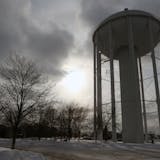Some of Minnesota's biggest unions and construction companies are pushing a plan to use state loan guarantees and tax breaks to kick-start a building industry that has been staggered by the recession. But they are keeping under wraps a list of projects that might benefit from it.
With 10 days left before the Legislature's deadline to adjourn, the plan's supporters said that key legislators had been shown a list of projects that might go forward should the fast-moving bill be adopted. The list, however, is not being made public -- a move that is raising some eyebrows over what the Legislature might be financing.
House Majority Leader Tony Sertich, DFL-Chisholm, who introduced the proposal on Monday in the House, said Thursday that he had not yet seen the list of projects. Another legislator, Rep. Keith Downey, R-Edina, complained that he was suspicious because "bills that come fast at the end of the session, presented by lobbyists, automatically raise a couple of questions."
Rep. Joe Mullery, DFL-Minneapolis, raised similar concerns at a hearing this week. "I'm just a little worried," he said. "I'm just looking at this. I can see a stadium, a race track, a casino" being eligible.
After a hearing Wednesday before the House Taxes Committee, the panel's chairwoman, Ann Lenczewski, DFL-Bloomington, said some of the tax breaks in the proposal could also easily apply to the Mall of America, which has been trying to finance a massive second-phase development. While the mall is not formally part of a nearly 70-member coalition pushing for the legislation, some of its lobbyists, including former Senate Majority Leader Roger Moe, have been testifying in behalf of the proposal.
List 'may never be released'
Dick Anfang, president of the Minnesota Building and Construction Trades Council, said the list of possible projects would not be released because doing so would release proprietary information, such as what land parcels an individual developer might be buying to build on. "It may never be released," he said.
Anfang said the list was being shown to legislative leaders in order to "establish credibility" at the State Capitol. The coalition pushing the legislation includes, among others, Ryan Companies, U.S. Bank, Kraus-Anderson Construction and the Faegre & Benson law firm.
![A black bear stopped after crossing Big Bay Road on Madeline Island, the largest of the Apostle Islands in Wisconsin, on Monday, May 31, 2021. ]](https://arc.stimg.co/startribunemedia/PWNYGIY3WTSWDBOGOYD775DPP4.jpg?&w=80&ar=1:1&fit=crop)


